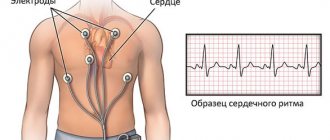High pressure in the intake manifold
For what reasons can there be high pressure in the intake manifold when the engine is idling?
From time to time you have to express your opinion on this matter. And in order not to waste time every time and not wear out the keyboard, I decided to express my thoughts in one post and simply provide a link to it in the future.
There are many myths about this, many assumptions and misconceptions. The majority of people who have this problem are sure that it is air leaking into the intake manifold, bypassing the throttle valve. Is it so? Or are there other reasons? Let's try to figure it out on this page.
What should be the pressure in the intake manifold?
The pressure in the intake manifold on a warm engine and idling should be 30-33 kPa. In this case, all powerful consumers must be turned off.
If on your car the pressure in the intake manifold is clearly higher than these values, then you should definitely understand the reason for such readings.
Causes of high pressure in the intake manifold
With any diagnosis, the first and most important question always inevitably arises: is the sensor working? Is there really such pressure there or is the sensor giving incorrect readings? By answering this question, we will be halfway to solving this problem.
The page How to check DBP describes how to check the sensor, sensor wiring, sensor supply voltage and has a video of the test.
But I want to note once again that, in my opinion, these sensors are very reliable and rarely fail.
If you have absolutely no desire to compete with a multimeter in the engine compartment, then the performance of the sensor can be roughly assessed using the diagnostic logs. If you press the gas pedal at idle and hold it at approximately 2000-3000 rpm, the sensor signal should jump slightly, and then drop to 23-25 kPa and remain at these values until you release the pedal
And if, when the gas pedal is depressed and the engine is under load (intense acceleration, driving uphill), the absolute pressure readings in the manifold become almost equal to barometric pressure, then the sensor is most likely working
If the sensor is working properly, then the pressure in the intake manifold is really too high and we will continue to look for the cause of this phenomenon.
Let's look at this situation as an example. Engine operation can be called normal, only fuel consumption has increased significantly
As you can see, the speed is normal, and the pressure in the intake manifold is as much as 42 kPa, which is almost 10 kPa higher than the norm.
The majority of advisers on the Internet immediately and unconditionally force you to look for an air leak. Reasoning for this is that more air enters the manifold and, accordingly, the pressure increases. But, in my opinion, this is complete nonsense. You shouldn’t immediately and headlong look for leaks. Better spend this time on more useful activities, which I will write about later.
Let me explain. The engine runs on air with a small addition of fuel mass. When we open the throttle, we give the engine more air so that it increases speed. It follows from this that if there is air leakage into the intake manifold, the idle speed will inevitably increase!
The ECU sees high speeds and tries to lower them, covering the passage of air through the idle air control (IAC). Therefore, I detect air leaks even without smoke generators and other devices. To do this, just look at the steps of the IAC. And on Lacetti engines 1.4 and 1.6, in general, it’s enough to look at the position of the throttle valve, since on them the IAC directly controls the throttle valve.
I tried to somehow join the discussion and express my point of view, but the sucker fanatics were not very keen on the theory I presented. Therefore, I decided to show everything clearly in practice.
Here are two graphs below. At first, engine operation without suction into the intake manifold
And on the second, I removed the hose from the crankcase ventilation valve, which ensured a pretty good air leak into the intake manifold, bypassing the throttle valve
And what do we see:
- The throttle position was 2.7, it became 0.4 - the ECU closed the damper to reduce the air supply to the engine
- The revolutions were 798, now 841
- The IAC position was 24, it became 4 - the ECU closed the air supply
- The pressure in the manifold was 34, it became 34. That is, it did not change!
From this I can draw three conclusions:
- If the pressure in the manifold has increased, and the IAC steps have not decreased to almost zero, then you should not waste time looking for mythical leaks
- If the IAC steps drop to almost zero, this means that there is a fairly strong suction. In this case, the leak was through the crankcase ventilation fitting, and it is quite large. Therefore, in this situation, there is little point in looking for microscopic leaks through the seals of the injectors and other little things, which almost all advisors on the Internet advise checking.
- The pressure in the manifold may increase when the IAC is completely closed and the ECU simply cannot regulate the air supply. But this will no longer be a weak leak, which, again, should not be looked for in microcracks. This will already be a large “hole”, which theoretically can be found even by the sound of a large amount of air being sucked in. For example, I also disconnected the tube from the adsorber, thereby creating a mega suction. The IAC is already completely closed (4-5 steps) and cannot compensate for the suction, which will inevitably lead to an increase in idle speed. Even with this suction, I was able to increase the pressure in the intake manifold only to 40 kPa. And the revolutions rose to 1000!
In general, if the IAC has not reduced the steps to a very low value, and the IAC speed has not increased, then, in my opinion, there is no air leak. And you shouldn't waste time looking for it.
I'll be distracted by air leaks. Connections through gaskets cannot be made 100% airtight, so everyone has air leaks, the only question is their quantity.
If they are not significant, then their effect on the operation of the engine management system based on the manifold pressure sensor is practically negligible and they do not lead to any problems. Problems begin, as we understand, when the suction becomes more than significant.
Even if you do not have a diagnostic adapter and you cannot see the steps of the IAC and the position of the remote control, then this is not a problem. Indirectly, the situation can be assessed as follows. With the engine idling, disconnect the crankcase ventilation hose from the intake manifold.
In this case, the speed should increase sharply and smoothly return to normal. This means that the IAC still has some adjustment margin and most likely there is no critical suction.
In particularly advanced cases, you can remove the corrugation from the throttle assembly...
...and block the air supply to the throttle. If the engine does not react to this and continues to operate stably, it means it is still getting air from somewhere.
Let's go further.
So why high intake manifold pressure?
There are several other possible reasons for this problem:
- Problems with the intake valve (sticking, sticking, burnout, spring breakage, etc.) are a very rare situation that, thank God, I have not encountered. In theory, the graph line should then not be flat, but “pulsating”. And you can forget about normal engine operation in this situation. But in our story the engine runs fine. Only increased fuel consumption.
- The exit of exhaust gases is difficult. But in this situation there is also no need to talk about normal engine operation.
How does the EGR valve work on the Lacetti?
Operating principle of the EGR valve
on a Chevrolet
Lacetti
is quite simple.
It opens or shuts off the supply of gases between the manifolds and unburned fuel vapors return to the combustion chamber. On most cars, the valves
are pneumatically actuated, but there is also an electric one.
Interesting materials:
Is it possible to write an application for distance learning at a university? Is it possible not to take my husband's last name? Is it possible not to go to college after 9th grade? Is it possible not to go to internship at the university? Is it possible not to change my passport? Is it possible not to come for a sample? Is it possible not to show up on a summons? Is it possible not to come to the elective exam? Is it possible not to renew the insurance policy? Is it possible not to let pedestrians pass?
Motor tester, your assistant. Part 7
Without exaggeration, the next unique opportunity that a motor tester gives a diagnostician is the acquisition and analysis of pressure oscillograms. To perform diagnostic procedures, the motor tester kit includes sensors designed to measure pressure.
There are several varieties of such sensors, designed for use in different situations:
- sensor for measuring pressure up to ±1 Atm. It is used to obtain an oscillogram of pressure in the intake manifold and in the engine crankcase;
- sensor for measuring pressure up to ±5..16 Atm. Used to record pressure oscillograms in engine cylinders without ignition;
- sensor for measuring pressure up to ±100 Atm. Designed to work with diesel engines.
Let's look at examples of methods for using a ±1 atm sensor
Intake manifold pressure
Its oscillogram can be taken both at idle and when cranking with the starter without starting the engine. The oscillogram of pressure in the intake manifold obtained at idle speed is very dependent on the design of the intake tract and varies significantly between engines of different models.
Existing methods for its analysis are very controversial, are not recognized by the overwhelming majority of diagnosticians and do not in all cases allow reliable conclusions to be drawn. Therefore, they will not be considered here. This does not mean that it is impossible to record and analyze an oscillogram of pressure in the intake manifold while the engine is running; The author considers any experiments and diagnosticians’ own experience to be acceptable.
On the other hand, the technique for analyzing a pressure oscillogram taken when the engine is cranked by the starter without starting is quite reliable, has been tested on many cars and is quite applicable. In any case, it works successfully on the engines of VAZ cars and most foreign cars.
To obtain an oscillogram, it is necessary to connect the ±1 atm pressure sensor to the engine intake manifold using a suitable piece of vacuum hose. You can not use synchronization by turning on the recorder mode, or you can connect the sensor of the first cylinder to the corresponding wire.
Next, you need to block the engine from starting by turning off the fuel injectors (in the case of synchronization by the high-voltage pulse of the first cylinder) or the ignition system, and, having started recording the oscillogram, crank the engine with the starter. The purpose of the technique is to check the correct installation of the valve timing and monitor the condition of the valve mechanism.
If the phases are set correctly, the pressure oscillogram in the intake manifold has a shape close to a sinusoid. The angles of inclination to the horizontal of the leading and trailing edges are the same by eye, the pressure peaks are approximately at the same level, the oscillogram is smooth and has no noise:
If the valve timing is set incorrectly due to an error in installing the timing belt or chain, the oscillogram takes on a sawtooth shape. The leading and trailing edges have a visually noticeable difference in the angles of inclination to the horizontal:
Noticeable noise in the upper part of the sinusoid means that the intake valves are so coked that carbon deposits on the valve plates prevent the effective filling of the cylinders with the fuel-air mixture:
An oscillogram of this type indicates disturbances in the operation of the valve mechanism associated with incorrect adjustment of thermal clearances or a malfunction of the hydraulic compensators:
Checking crankcase gas pressure pulsations
The diagnostic technique for pressure pulsations is based on the following considerations. After the fuel-air mixture is ignited, the pressure in the cylinder reaches high values. In this case, some of the gases inevitably break through the cylinder-piston group into the crankcase, causing pressure pulsations there. This phenomenon is observed even on a working engine. By assessing the level of crankcase gas pressure pulsations using a ±1 Atm sensor, one can judge the condition of the cylinder-piston group.
This is what an oscillogram of crankcase gas pressure pulsations looks like in a working engine idling. Please note that the pressure peaks from all cylinders are approximately at the same level:
And here the pressure pulse of one of the cylinders stands out sharply against the background of the others:
Such an oscillogram indicates that in one of the cylinders there may be damage to the cylinder bore, broken or stuck piston rings, broken partitions or burnout of the piston. Determining the number of a faulty cylinder is quite simple: to do this, you need to set the motor tester to be synchronized using a high-voltage pulse.
Brief summary
The ±1 atm pressure sensor is used to obtain pressure oscillograms in the intake manifold and in the engine crankcase. Methods for analyzing oscillograms allow us to draw a conclusion about the correctness of the valve timing, the state of the valve mechanism, and the state of the cylinder-piston group.
A pressure sensor ±5..16 atm is used to obtain an oscillogram of pressure in an engine cylinder without ignition in this cylinder.
Taking an oscillogram is most often not very difficult and is performed in the following order:
- start the engine and warm it up to operating temperature;
- unscrew the spark plug from the cylinder under test;
- Install the removed high-voltage wire onto the arrester;
- install a synchronizing sensor of the first cylinder on the wire with the spark gap;
- screw the pressure sensor into place of the spark plug, either directly or through a metal adapter;
- configure the motor tester to measure pressure, set synchronization from the sensor of the first cylinder;
- start the engine and take an oscillogram.
There are several important points to make. The need to use a spark gap is due to the fact that at atmospheric pressure and a small interelectrode distance of the spark plug, the peak of the high-voltage breakdown will be insufficient for stable synchronization of the motor tester.
In the case where the engine is equipped with a single module of individual ignition coils for all cylinders (some Opel, Peugeot, Renault engines), you can remove the module and install additional high-voltage wires between its terminals and spark plugs, while observing safety precautions. Then secure the module to the engine to prevent damage during operation.
If possible, remove the connector from the injector of the cylinder being diagnosed to prevent fuel supply. Before installing it in the cylinder, calibrate the pressure sensor, if the motor tester allows this. It is recommended to take a high voltage oscillogram along with the pressure oscillogram in order to be able to assess the relative position of the ignition moment and compression TDC.
Analysis of the oscillogram of pressure in the cylinder is a separate large topic, and an article posted on our website .
Let's look at a few examples of real oscillograms.
Why is DBP required?
The correct operation of a small device affects the composition of the combustible mixture supplied to the pressure chamber. The absolute pressure sensor relies on the vacuum state during measurement, setting it as an absolute value. This is the basic principle of its operation.
When the information enters the electronic control unit, the optimal air density and flow rate are calculated, and after that the fuel-air mixture is prepared. The ECU transmits certain commands, based on the mass of required air obtained during the calculation, and the injectors responsible for fuel injection are adjusted.
Absolute pressure sensors have become a replacement for the flow meter, however, in some vehicle models both devices may be present at once.
What to look for in a faulty MAP sensor?
A faulty MAP will affect the air/fuel ratio of the engine. If the composition of the mixture is not correct, then detonation combustion is possible. If detonation continues for a long time, the internal parts of the engine (such as pistons, rings) will be damaged, and this will ultimately lead to catastrophic failure. Please pay attention to these warning events:
- Rich composition: rough idling, excessive fuel consumption, black smoke, poor acceleration and a strong smell of unburned fuel (especially at idle);
- Poor composition: operation in waves, stalling, lack of power, weak acceleration, “sneezing” reverse emissions to the intake, overheating of the converter;
- Detonation and misfire;
- Malfunction lamps in the engine control system (Check Engine).
Repairing an engine is a lot more hassle than replacing a sensor, so if your engine has any of the above symptoms, have your MAP sensor diagnosed.
Diagnostics
How to check the sensor? Is it possible to find the error yourself? The answer is that there is such a possibility, for this you will need several things:
- Vacuum pressure gauge;
- Universal tester;
- Vacuum pump;
- Total station.
If you have the above tools and devices, you can begin diagnostic measures, they are as follows:
- Let's say you have an analog sensor. First of all, you should attach the adapter to the vacuum hose between the DBP and the intake manifold; the pressure gauge is attached directly to the adapter.
- We start the engine, it idles for some time. Next you need to observe the pressure of the intake manifold. If it does not exceed a value of 529 mmHg, it is necessary to check the integrity of the vacuum hose, are there any breaks or clamps/kinks that interfere with the free movement of air? Next you should check the camshaft belt. An additional reason may be a factory failure of the diaphragm of the sensor itself.
- After using the pressure gauge, you can replace it with a vacuum pump. Try using a pump to create a pressure in the manifold of up to 55-560 mmHg and immediately stop pumping. If the sensor is in good condition, the vacuum level can last up to 30 seconds. These are symptoms of normal operation of the device, otherwise you may have to replace the entire sensor.
- If you have a digital sensor, you will need the tester in voltage mode.
- Turn on the car ignition and find the power contacts in the sensor. We connect a wire to the tester from the signal contact of the absolute pressure sensor. During normal operation, the voltage will be about 2.5 V. A value above or below this norm is an indicator of a malfunction with the sensor.
- Next you need to change the tester mode to total station. We disconnect the vacuum hose, connect the plus of the tacheometer to the signal wire, the negative contacts to ground. If the tacheometer value approaches 4400-4850 rpm, then this is an indicator of normal sensor operation.
- The next step will require the use of a vacuum pump. We connect it to the sensor hose. It is necessary to observe what value the tacheometer gives when the vacuum level in the sensor changes. If the sensor is working properly, then the readings of both devices will show the norm.
- Next, turn off the vacuum pump if the tacheometer stops at 4400 and 4900 rpm - this is an indicator of normal sensor operation. If the tacheometer deviates from these values, this can be considered a sensor malfunction signal.
Why do MAP sensors fail?
Like most electrical sensors, MAPs are sensitive to contamination. If a hose is used to connect the MAP, it may become clogged or leaky, which will lead to an error in sensor measurement or, in general, to the impossibility of this. In some cases, extreme vibrations from driving can loosen connections and cause external damage. Electrical connectors can also melt or crack from overheating due to their close proximity to the engine. In any of these cases the MAP must be replaced.
Where can I buy
Spare parts and other products for the car are easily available for purchase at auto stores in your city. But there is another option that has recently received significant improvements. You no longer need to wait a long time for a parcel from China: the AliExpress online store now offers the opportunity to ship from transshipment warehouses located in various countries. For example, when ordering, you can specify the “Delivery from the Russian Federation” option.
Follow the links and choose:
| Intake air pressure sensor 4Bar for Renault, Peugeot, KIA, Hyundai, Citroen | GKFLY car jump starter, external battery | Car charger, 2 USB ports, 5 V, 3.1 A |
| EANOP HUD car display, windshield projector | Baseus car humidifier | Car automatic parking sensors with 4 sensors |
Symptoms of a malfunctioning absolute air pressure sensor
A whole group of “symptoms” can indicate a breakdown of DBP:
- Fuel consumption increases noticeably, which occurs due to the receipt of a signal from the sensor to the ECU about high pressure, the level of which is actually lower. In this case, the electronic unit gives a command to supply a mixture enriched more than necessary.
- The engine dynamics deteriorate, which does not return to normal even after warming up.
- Even in the summer season, white-colored exhausts appear.
- There may be a gasoline smell coming from the exhaust.
- The idle speed does not decrease for a long time.
- Switching is accompanied by sudden jerks or dips.
- An incomprehensible kind of noise, often developing into a hum.









